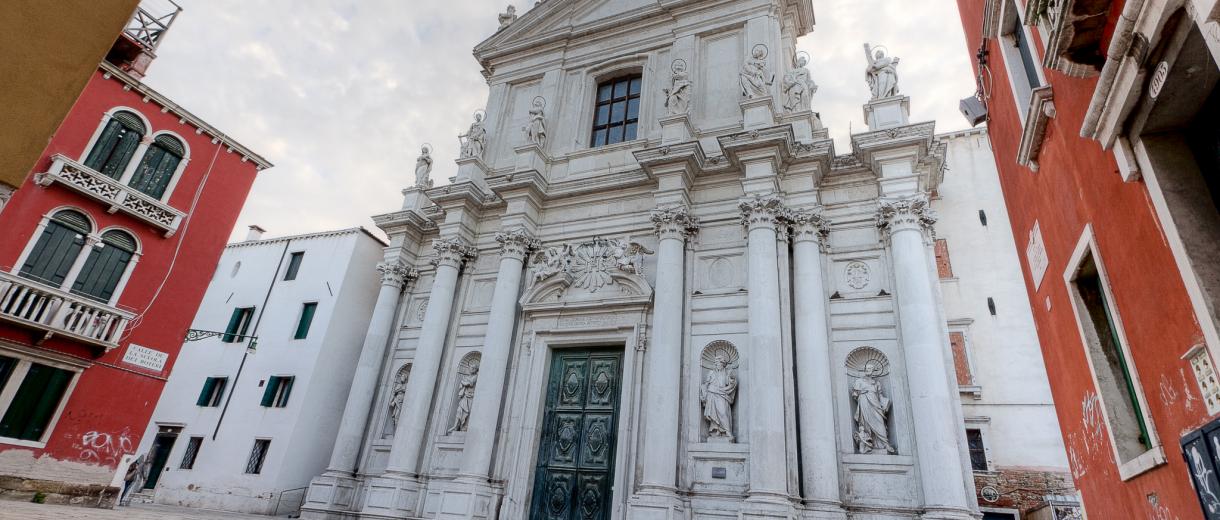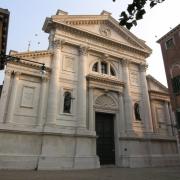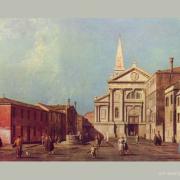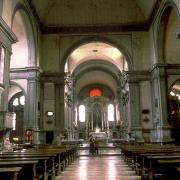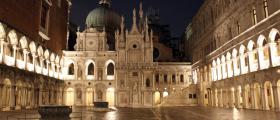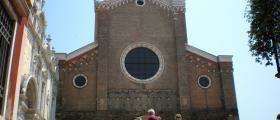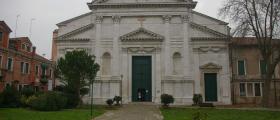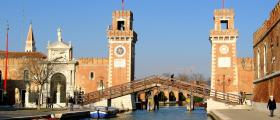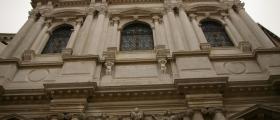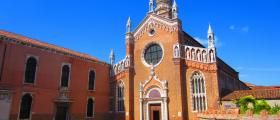San Francesco della Vigna
It is one of the nicest Renaissance Churches in Venice. It lies in the homonymous square (campo), in the Castello District, a few steps from the Arsenale.
The name derives from the vineyards that in 1500 were cultivated within the Monastery. The first stone was laid by Doge Andrea Gritti in 1534 (at his death, he was buried inside the church). The building was started by Jacopo Sansovino and was completed in 1554. The façade, instead, was in charge of Palladio in 1564. It was probably thanks to Daniele Barbaro, just like its first job beside the Basilica of Castello, that he was assigned this task.
This choice was quite difficult, as Sansovino had finished the Church some years earlier and had also designed its façade. The main difficulty in planning the style of the façade was given from the necessity to combine the front of a building composed by a single wing with the plan composed by more naves of Christian Churches, difficulty got around remarkably by Palladio through the use of a bigger central gable and two lateral half-gables. Such scheme was then reused in other churches, and even enriched with a staircase (an example is the Redentore (Redeemer) Basilica).
The Monastery, now used for temporary expositions, concerts and for some Biennale expositions, is composed by two cloisters, one of which (the major one) was used as a cemetery (within it many Venetian nobles are buried). The legend tells that Evangelist Marco took shelter here and was greeted by an angel who told him these words: “Pax tibi Marce Evangelista meus, hic requiescet corpus tuu” (peace to you, Marco, My evangelist, here will rest your body). Words that were then used as a motto for the Serenissima Republic.
Inside the Monastery there was also the library, that someone says it dates back even to 1260. The first certain news about it anyway date back to 1437, when Pope Eugene IV named it in one of his edicts. The library, that was also attended by lay people, was enlarged many times, especially thanks to donations by Andrea Bragantin and Girolamo Badoer. Unfortunately not even it was spared by the barbaric acts that took place during the Napoleonic conquest. At present the library, seat of the Institute of Ecumenical studies of San Bernardino already since 1989, contains 80000 modern books and 13000 antique texts, among which operas coming from some French convents recently closed.
Campo della Confraternita
Castello District – Venice
Tel 041 5206102
ACTV lines: Celestia Stop

